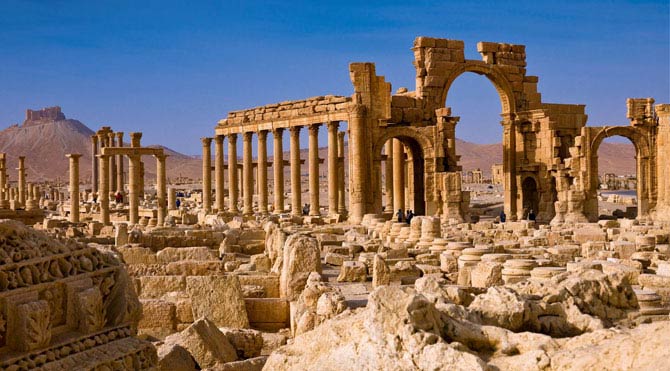


At the height of the Islamic State group’s rampage across Syria, the world watched in horror as the militants blew up an iconic arch and temple in the country’s famed Roman ruins in Palmyra.
Eight years later, IS has lost its hold but restoration work on the site has been held up by security issues, leftover IS land mines and lack of funding. Other archaeological sites throughout Syria face similar problems, both in areas held by the government and by the opposition.
They were damaged by the war or, more recently, by the deadly 7.8-magnitude earthquake that struck a wide area of neighbouring Turkey and also Syria in February.
Youssef Kanjou, a former director of Syria’s Aleppo National Museum, said the situation of heritage sites in his country is a “disaster.”
Without a coordinated preservation and restoration effort, said Kanjou, now a researcher at Tübingen University in Germany, “We will lose what was not destroyed by the war or the earthquake.”
Before the war, Palmyra — one of Syria’s six UNESCO world heritage sites — was the country’s archaeological crown jewel, a tourist attraction that drew tens of thousands of visitors each year.
The ancient city was the capital of an Arab client state of the Roman Empire that briefly rebelled and carved out its own kingdom in the third century, led by Queen Zenobia. In more recent times, the area had darker associations. It was home to the Tadmur prison, where thousands of opponents of the Assad family’s rule in Syria were reportedly tortured. IS demolished the prison after capturing the town. The militants later destroyed Palmyra’s historic temples of Bel and Baalshamin and the Arch of Triumph, viewing them as monuments to idolatry, and beheaded an elderly antiquities scholar who had dedicated his life to overseeing the ruins.
Today, the road through the desert from Homs to Palmyra is dotted with Syrian army checkpoints. In the town adjacent to the ancient site, some shops have reopened, but signs of war remain in the form of charred vehicles and burned-out or boarded-up stores and houses.
The Palmyra Museum is closed, and the much-loved lion statue that used to stand in front of it has been moved to Damascus for restoration and safekeeping.